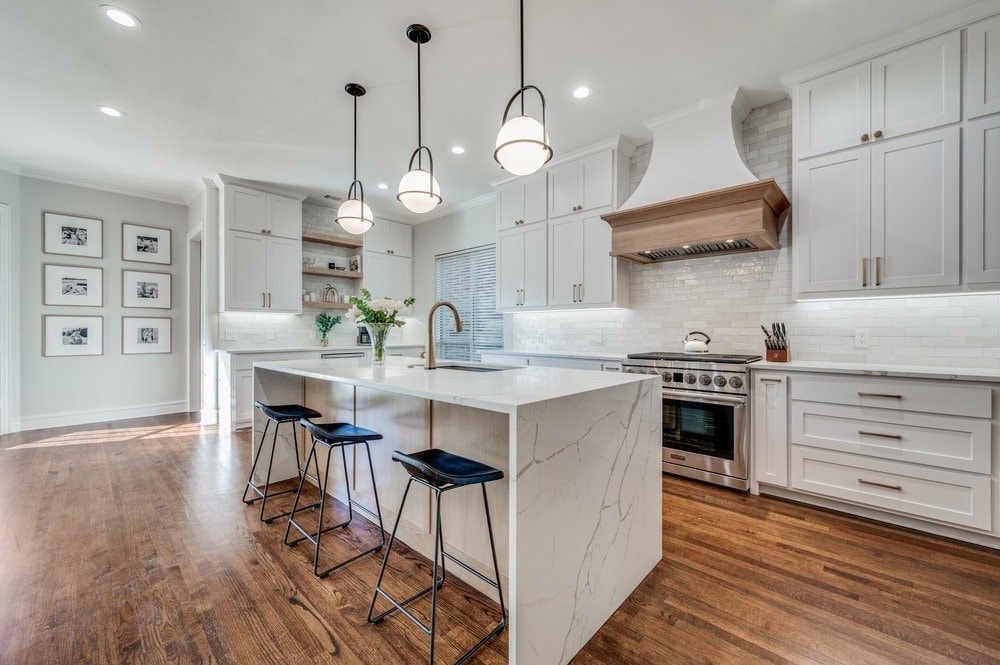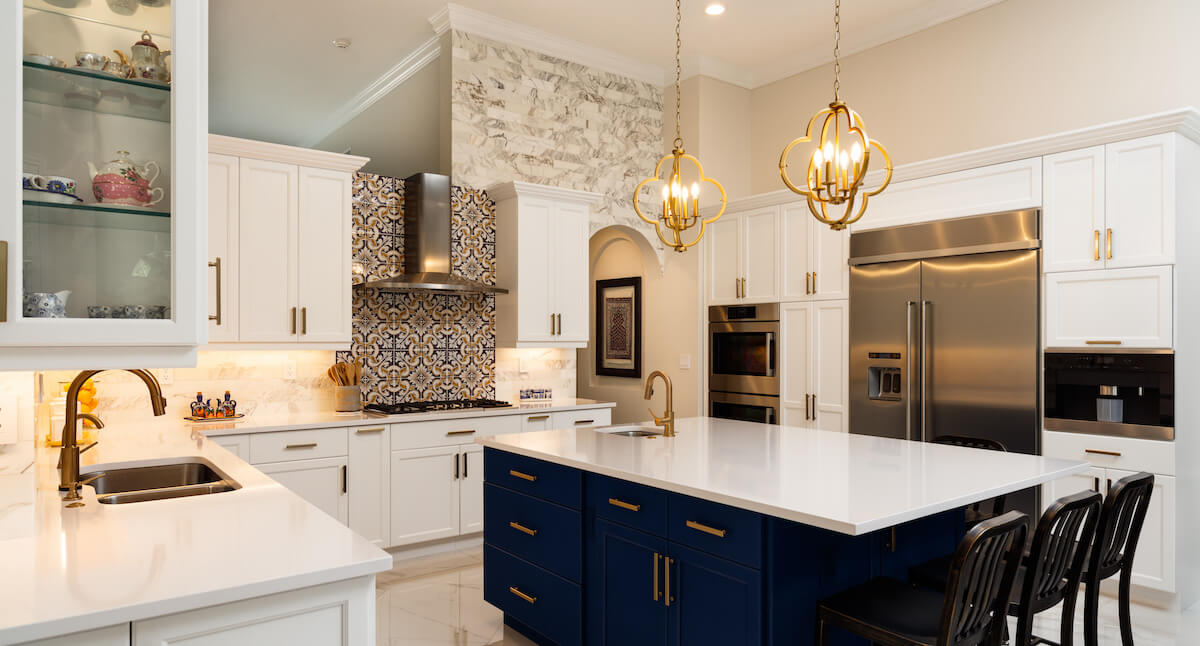
Kitchen Remodel Cost in Fort Worth (2025 Guide)
If you plan a kitchen remodel in Fort Worth this year, this guide gives you clear, data-based numbers, what drives the price, where you can save, and what return you may get at resale. The ranges below use current national/DFW cost studies, local permit rules, and 2025 market updates. I keep the language simple and straight so you can plan with confidence.
What most Fort Worth homeowners spend in 2025
-
Typical total cost: $20,000–$25,000 for light updates, $25,000–$40,000 for mid-range, and $40,000–$75,000+ for major gut jobs with layout moves and custom finishes. These ranges align with current U.S. averages and DFW market guides and reflect 2025 pricing pressure on labor and materials.
-
Cost per square foot (helpful for quick math): $150–$350/sq ft depending on scope, finish grade, and layout changes.
-
10×10 kitchen (about 100 sq ft): ~$25,000–$30,000 for a basic to mid-range “pull-and-replace”; more if you move walls or utilities.
Why such a wide range? Cabinets, counters, and labor drive most of the total. Moving plumbing, gas, or walls adds a lot. Appliance tier matters, too.
Fast estimator by scope (Fort Worth 2025)
| Scope | What it includes | Typical budget |
|---|---|---|
| Cosmetic refresh | Paint, hardware, basic lighting, minor repairs, keep layout and cabinets | $12k–$20k |
| Pull-and-replace (mid-range) | New stock/semi-custom cabinets, quartz/granite counters, LVP/tile flooring, mid-tier appliances, lighting, small electrical/plumbing updates | $35k–$50k |
| Major remodel | Custom cabinets, layout changes, new island, wall removal, new circuits/plumbing runs, pro-appliance package, premium surfaces | $45k–$100k+ |
Tip: Keep at least 10–15% as a contingency for surprises inside walls or code upgrades.
How your choices move the number
1) Cabinets (biggest lever)
-
Budget: Stock or RTA boxes, repaint/reface existing, simple layouts.
-
Mid-range: Semi-custom lines, plywood boxes, soft-close hardware, added pantry storage.
-
Premium: Full custom, built-ins, specialty inserts, taller uppers, furniture details.
Rule of thumb: Cabinets can take ~25–35% of the total.
👉 If you’re planning new cabinetry, see Custom Cabinets for tailored options and design support.
2) Countertops
-
Laminate: most affordable.
-
Butcher block: warm look, needs care.
-
Quartz/granite: popular, durable, wide price spread by color/thickness.
-
Marble/quartzite/porcelain slabs: premium.
Typical share: ~10–15% of the total.
Compare materials and fit with Countertop Installation.
3) Appliances
-
Mid-tier packages cost far less than pro-style ranges and built-ins.
-
Gas line moves, 240-V circuits, venting upgrades add labor.
Typical share: ~10–20%.
4) Flooring & tile
-
LVP and standard tile control cost.
-
Hardwood or large-format porcelain add labor.
Typical share: ~7–12%.See material and install options: Flooring Services.
5) Labor (carpentry + trades)
-
Demo, carpentry, drywall/paint, tile setting, electrical, plumbing, HVAC, finish trim.
-
Interior wall removal and new island with utilities are cost multipliers.
6) Layout changes
-
Keeping the sink/range in place saves money.
-
Moving gas, water, drains, or vent hood routing adds time and inspections.
7) Permits & inspections (Fort Worth specifics)
-
Fort Worth uses residential remodel permit fees that scale by number of trades required (e.g., one trade vs. electrical + plumbing + mechanical). As a floor, minimum permit fees often start a little over $500 and step up as more trades are involved. Plan a Several hundred dollars for typical kitchen scopes.
-
Contractors doing work in the city must be registered with Fort Worth (annual fee applies).
These are small line items compared with your overall budget, but they matter for schedule and compliance.
We handle permitting, inspections, and city coordination for you under General Contracting.
Line-item cost breakdown (helpful planning guide)
| Line item | Entry choice | Mid choice | Premium choice |
|---|---|---|---|
| Cabinets & hardware | Reface/repaint, stock boxes | Semi-custom | Full custom |
| Counters (installed) | Laminate / basic butcher block | Standard quartz/granite | Marble, quartzite, porcelain slabs |
| Backsplash | Ceramic subway | Porcelain/handmade tile | Stone slab / niche work |
| Flooring | LVP / sheet vinyl | Porcelain tile / site-finished hardwood in adjacent areas | Large-format tile / patterned stone |
| Appliances (4-piece) | Mid-tier freestanding | Slide-in range + better vent | Pro appliances / built-ins |
| Electrical & lighting | Replace cans/pendants | Add circuits, under-cabinet | Panel upgrades, layered lighting plan |
| Plumbing | Fixture swap | Move sink/dishwasher | Relocate lines / add pot filler |
| Paint, trim, misc. | Standard | Added millwork | Specialty finishes |
Use this grid to choose where to go mid-range and where to splurge. Most families get the best long-term value by putting money into cabinets, counters, and good lighting.
ROI: what pays back best in DFW
If you plan to sell in the next few years, a minor kitchen refresh (new surfaces, lighting, hardware, basic appliances) often returns most of its cost at resale. Big, upscale kitchen projects usually return less than you put in, so do those for living quality, not for pure ROI.
Translation: If resale is your goal, target a clean, modern look with durable mid-range choices and a functional layout. If this is your “forever kitchen,” invest where you’ll feel and use it daily (storage, lighting, island seating, ventilation).
Fort Worth permit basics (plain English)
-
Do I need a permit? Most kitchen projects with electrical, plumbing, or mechanical work require a city permit.
-
How are fees set? For residential remodels here, minimum permit fees scale with the number of trades on the job (for example, 1 trade vs 3 trades).
-
Do contractors need to be registered? Yes—contractors working in Fort Worth must be registered with the city and meet insurance and fee requirements.
-
Why it matters: Permits protect you, ensure code compliance, and help with resale and insurance.
We coordinate permits, inspections, and scheduling so you don’t have to. Learn more under Kitchen Remodels and General Contracting.
Budget patterns the industry uses
A common planning model for a balanced, mid-range project:
-
Cabinetry & hardware: ~29%
-
Installation/labor: ~17%
-
Appliances & ventilation: ~14%
-
Countertops: ~10%
-
Flooring: ~7%
-
Lighting: ~5%
-
Walls/ceilings (drywall/paint): ~5%
-
Design fees: ~4%
-
Doors/windows: ~4%
-
Plumbing fixtures: ~4%
-
Other/misc.: ~1%
These percentages help you right-size choices. If cabinets jump, something else should come down to keep totals steady.
Ways to lower your kitchen cost (without hurting quality)
-
Keep the layout. The fastest way to save is not to move the sink/range.
-
Semi-custom over custom. You’ll get strong boxes, good finishes, and modern storage without a full custom bill.
-
Value stone. Many quartz patterns price lower than rare granites or exotic stone, with better stain resistance.
-
Flooring smart. Quality LVP or standard porcelain looks great and saves on install.
-
Refine the spec list. A great vent hood and lighting often matter more than pro-badges on appliances for most families.
-
Phase upgrades. Do the heavy trades and cabinets now; swap appliance tiers later.
-
Shop schedule. Starting outside peak demand can cut lead times and labor pressure.
Timeline (what to expect)
-
Design & selections: 2–6 weeks
-
Permits & ordering: 1–3 weeks (depends on lead times)
-
On-site work:
-
Cosmetic: 1–2 weeks
-
Pull-and-replace: 4–8 weeks
-
Major layout change: 8–14+ weeks
-
-
Inspections & punch list: 1–2 weeks
Total time varies with material lead times (cabinets/counters), inspection scheduling, and scope changes.
Common Fort Worth cost drivers to watch
-
Panel upgrades or new circuits for induction, built-in ovens, or code-required GFCI/AFCI.
-
Ducted venting changes when moving the range or upgrading CFM.
-
Floor leveling in older homes before tile or large-format stone.
-
Structural work if you remove a load-bearing wall for an open plan.
-
Code updates (smoke/CO, outlets, lighting counts) triggered by the remodel.
-
Lead paint (homes built before 1978) or material disposal rules.
Example budgets (realistic 2025 scenarios)
A. 10×10 “pull-and-replace” (keep layout)
-
Semi-custom cabinets with soft-close
-
Quartz counters, ceramic backsplash
-
LVP or standard porcelain tile
-
Mid-tier appliance package
-
Minor electrical/plumbing updates, new lighting
Range: $30,000–$55,000
B. Mid-size kitchen with island & a wall removal
-
Semi-custom or partial custom cabinets
-
Quartz/quartzite, upgraded tile
-
Slide-in range, strong hood, drawer microwave
-
New circuits, move sink, patch/level floors
-
Engineering and inspections for a beam
Range: $45,000–$110,000
C. Premium “forever kitchen”
-
Full custom cabinetry, built-ins
-
Stone/quartzite slabs, slab backsplash
-
Pro-style appliances and make-up air if required
-
Full lighting design, smart controls
-
New layout, re-routed utilities
Range: $120,000–$180,000+
When should you remodel for ROI vs. lifestyle?
-
Selling soon (≤3 years): Aim for a clean, neutral, mid-range refresh. Focus on surfaces, storage, lighting, and ventilation. Skip hyper-custom choices that only you love.
-
Staying long-term (5–10+ years): Invest in the layout, storage, and durable finishes you’ll enjoy every day.
Why work with a local, registered contractor
-
Code & permits: Fewer delays and smoother inspections.
-
Trade coordination: Kitchen remodels usually need multiple trades (carpentry, electrical, plumbing, HVAC).
-
Scheduling & warranty: Clear timelines, clean site, and support after completion.
-
Design help: Making early choices that protect budget and look great.
We design, build, and manage start-to-finish. See Kitchen Remodels and General Contracting, and reach us via Contact for a free walk-through and estimate.

